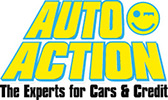
Traffic fatality rates have been falling for decades. After hitting an all-time low of 10.28 fatalities per 100,000 population in 2014, rates have reversed again, averaging 11.31 per 100,000 from 2015 to 2018, the most recent years for which data is available.
According to the Huffington Post, the leading causes of accidents are distracted driving, drunk driving, speeding, reckless driving, and rain. Running red lights, night driving, design defects, tailgating, and wrong-way driving or improper turns are other noted causes of accidents.
You can’t do much about the weather, but many of the other causes of traffic accidents are preventable through cautious driving. Here are eight safe driving tips that could save your life.
- Don’t use your cell phone while driving. According to the National Safety Council, cell phone usage while driving causes 1.6 million car accidents per year, with almost 390,000 injuries caused by texting while driving. Try not to use your phone while driving, and if you must use it, use Bluetooth for hands-free calling and keep your hands on the steering wheel.
- Don’t drink and drive. It should go without saying, but nearly 30 people die every day in drunk driving accidents, so it bears repeating: Never, ever drive if you’ve been drinking. You might think you’re fine even if you’re impaired, so you can’t trust your judgment on this. If you’ve been drinking, assume you’re impaired and find another way to get home.
- Obey the speed limit. According to the National Highway Traffic Safety Administration (NHTSA), speeding is a factor in about a quarter to a third of all traffic fatalities. This includes driving too fast for road conditions during bad weather. If you find that you’re always in a hurry, try leaving earlier so you can take your time reaching your destination.
- Slow down when driving conditions warrant it. Rain and snow affect the traction on your tires, and many people have trouble seeing clearly at night. When driving conditions are less than ideal, slow down. You’ll have more time to respond to unexpected dangers, and you’ll be much less likely to lose control in the rain or snow.
- Don’t try to beat the red lights. Yes, you can legally enter an intersection while the light is yellow, but if you try to beat the red light, you may not make it in time – and red is red. Approach intersections cautiously and don’t be in such a hurry to get where you’re going that you end up running a red light.
- Don’t follow too closely. Leave plenty of room between yourself and the car in front of you in case they stop suddenly. If you follow too closely, you won’t have time to react when they brake and could end up rear-ending them.
- Pay attention to signs. Things like wrong-way driving on one-way streets make the list because people don’t pay attention. The signs are there for a reason. If the sign says no turn on red, it’s not OK to go anyhow if you don’t see something coming. Be careful, and obey the signs.
- Double-check when changing lanes. Don’t forget that most cars have a blind spot. Don’t just check your mirrors. Turn your head and check your blind spot before changing lanes. And while you’re at it, remember that other drivers have blind spots as well. Avoid driving in other driver’s blind spots so you don’t get hit when they forget to check.
These safe driving tips can help you avoid an accident, but not all accidents are avoidable. If you’re ever in an accident, your chances of survival will be greater if you’re driving a car that handles collisions well. If you’re in the Phoenix area, check our inventory for a safer vehicle to protect yourself and your family in the event of an accident.
Sources:
Motor vehicle fatality rate in the U.S. by year
